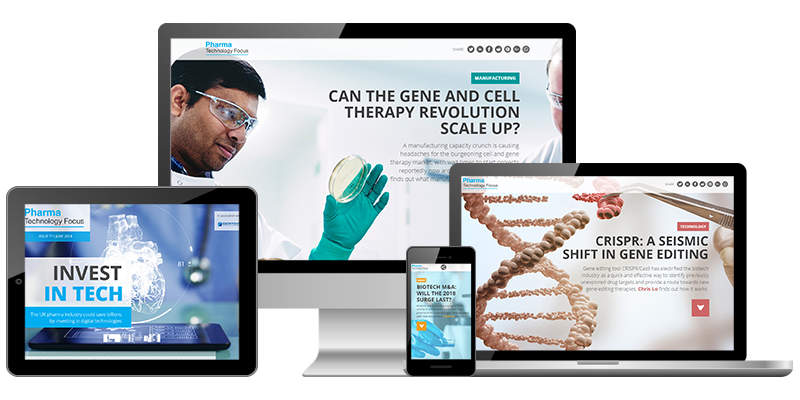
Pharma Technology Focus is now available on all devices. Read it for free here.
Analysts are predicting a surge of M&A activity in the biotech space, with large pharma firms looking to pad their pipelines with new acquisitions and US tax reform freeing up cash flow. We look at how the biotech M&A landscape is shaping up over the course of 2018.
We also find out why a potential capacity crunch may be on the way for the burgeoning cell and gene therapy market, examine new research that has found that some non-antibiotic drugs affect the growth of gut bacteria, and track the history of drug development for mumps following a recent resurgence of the disease in the US.
Finally, we profile the Swiss pharmaceutical industry, consider whether the UK’s drug approval process is in need of an overhaul, find out how digital technology could unlock billions in savings for pharma companies, and take a closer look at CRISPR, the revolutionary gene-editing tool that can be used to quickly identify drug targets.
In this issue
Biotech M&A: will the 2018 surge last?
Analysts are predicting a surge of M&A activity in the biotech space, with large pharma firms looking to pad their pipelines with new acquisitions. Chris Lo investigates.
Read the article here.
Can the gene and cell therapy revolution scale up?
A manufacturing capacity crunch is causing headaches for the burgeoning cell and gene therapy market, with wait times to start projects reportedly now around 16 months. Chris Lo finds out what manufacturers are doing to clear this backlog.
Read the article here.
How well do you really know your competitors?
Access the most comprehensive Company Profiles on the market, powered by GlobalData. Save hours of research. Gain competitive edge.

Thank you!
Your download email will arrive shortly
Not ready to buy yet? Download a free sample
We are confident about the unique quality of our Company Profiles. However, we want you to make the most beneficial decision for your business, so we offer a free sample that you can download by submitting the below form
By GlobalDataGut instinct: how common drugs affect the microbiome
New research from the European Molecular Biology Laboratory has found that one in four non-antibiotic drugs affect the growth of bacteria in the gut, which could promote antibiotic resistance. Abi Millar finds out more.
Read the article here.
Tracing the story of mumps: a timeline
A recent resurgence of mumps in the US has been linked to a waning effect of the vaccines normally used to create immunity. Elliot Gardner takes a closer look at the history of mumps and the drugs used to treat the disease.
Read the article.
Inside Swiss pharma: the ideal environment for success
Two of the world’s leading pharmaceutical companies, Novartis and Roche, call Switzerland home. Abi Millar finds out why these giants, along with others, have found the Swiss nation to be so conducive to success.
Read the article here.
Is the UK’s drug evaluation system in need of an overhaul?
A recent debate surrounding access to a cystic fibrosis treatment elicited some scathing remarks about NICE, the UK medical board responsible for introducing new drugs. Ross Davies investigates whether this approval process is no longer up to scratch.
Read the article here.
Could digital tech unlock billions for pharma companies?
A new Accenture study projects a potential £22bn in cost savings in the UK pharmaceuticals industry through investment in digital technology. Elliot Gardner finds out more from Accenture analysts.
Read the article here.
CRISPR: a seismic shift in gene editing
Gene editing tool CRISPR/Cas9 has electrified the biotech industry as a quick and effective way to identify previously unexplored drug targets and provide a route towards new gene-editing therapies. Chris Lo finds out how it works.
Read the article here.
Next issue preview
Though the Chinese pharma market is massive, red tape, lack of patient rules and underinvestment have deterred investors and held back quality healthcare. A raft of new changes to approval processes, however, means the country is opening up. We investigate the implications.
We also consider what steps need to be taken to improve US adoption of biosimilars, profile TriNetX, a global health research network that provides anonymised, real-world patient data, find out more about a new method of manufacturing proteins outside of a cell, and ask whether a drug-based solution to America’s war with opioid addiction could be in the pipeline.
Finally, we investigate whether poor animal research studies are compromising human health, speak to the researchers behind a new drug combination for the treatment of hepatitis C, and review the findings of a survey on the pricing and reimbursement issues surrounding innovative new cell and gene therapies.






